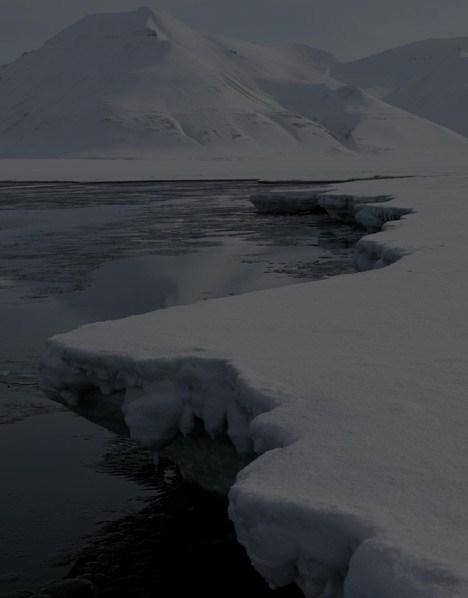
3 minute read
Artic Ice
A Warning from Earth by Julia Harenberg
According to the NY Times, the melting of the Arctic Sea ice has finally ended for the year, but breaking a record that will have devastating impacts on many future aspects of the Earth. The Arctic Sea reached a low of sea ice cover of 1.32 million square miles before the sea began to refreeze after the melting period ended, according to the National Snow and Ice Data Center, This means that the ice cover was 24 percent of the Arctic Ocean. The last record low was in 2007, where the ice cover was 29 percent of the Arctic Ocean. When satellite tracking first began in the 1970s, the lowest ice cover amount reached in the Arctic Ocean during the melting season was usually about 50 percent.. This shows a significant drop in ice cover and a significant increase in ice melt over the past four decades. In August, the Arctic Sea ice melted at a rate of about 35,400 square miles per day, according to National Geographic. This broke the record for August and was also a rate that was twice as fast as normal. So what caused this record breaking ice melt? Why is it so different from all the melting seasons before? Scientists believe that the 2007 record was due to conditions that involved a weather pattern known as an anticyclone which entails clear skies that allowed more sunlight to reach the ice and melt it. The ice is continuously thinner than it was in the past, so it melts at a faster rate, said Julienne Stroeve of the NSIDC. Stroeve researched the extent to which global warming is the reason for the melting. Human caused greenhouse gas emissions are responsible for 60% of the shrinkage of sea ice since 1979, and the rest is due to natural climate variability. Scientists now believe that the Arctic Ocean will be free of summer ice as soon as 2020, which is much sooner than the United Nations predicted in 2007.
The increasing of ice melt may not seem like a big deal since it does refreeze after the melting season is over, but there are many potential consequences that we may have to face due to the increase in magnitude. The Arctic acts as an air conditioner for the entire world and it is slowly disappearing. The melting sea ice itself will not cause a direct global sea level rise because the space taken up by melted sea ice is the same as the original ice cover. However, as the ice melts a once white reflective surface becomes a dark ocean surface, causing more of sun’s heat to be trapped into the ocean, which contributes to the melting of the Greenland ice sheet resulting in global sea level rise.
The extra heat in the ocean also goes into the atmosphere as water vapor contributes to warmer temperatures and storm formation. Jennifer Francis, a climate researcher here at Rutgers in the Marine and Coastal Science Department, says that the sea ice reduction can cause raised temperatures in the northern hemisphere and also influence the flow of atmospheric jet streams. The jet streams have already been observed getting larger and moving more slowly, which can prolong fall and winter weather patterns across the entire northern hemisphere. Many extreme weather events such as droughts, cold spells, and heat waves are directly associated with these slow moving weather patterns. On top of the global sea level rise and the extreme weather conditions that will threaten our hemisphere, Walt Meier, a research scientist at the Snow and Ice Center, says that polar bears may potentially go extinct, and native communities will have to adapt to the changes. This record breaking sea ice melt is the Earth’s reaction to human input. Science has been stressing the potential consequence of heat-trapping emissions in the atmosphere and they fear that they may have underestimated the severity and speed of the consequences. This ice melt should serve as a red flag to make serious global moves in reducing and limiting emissions. Unfortunately, the NY Times reported that governments have not responded with great urgency and that many are actually planning to exploit newly accessible minerals in the Arctic which includes drilling for more oil. Everything is interconnected. The Arctic Sea may be far away from us, but the impacts from its melting may be felt all over the world.












